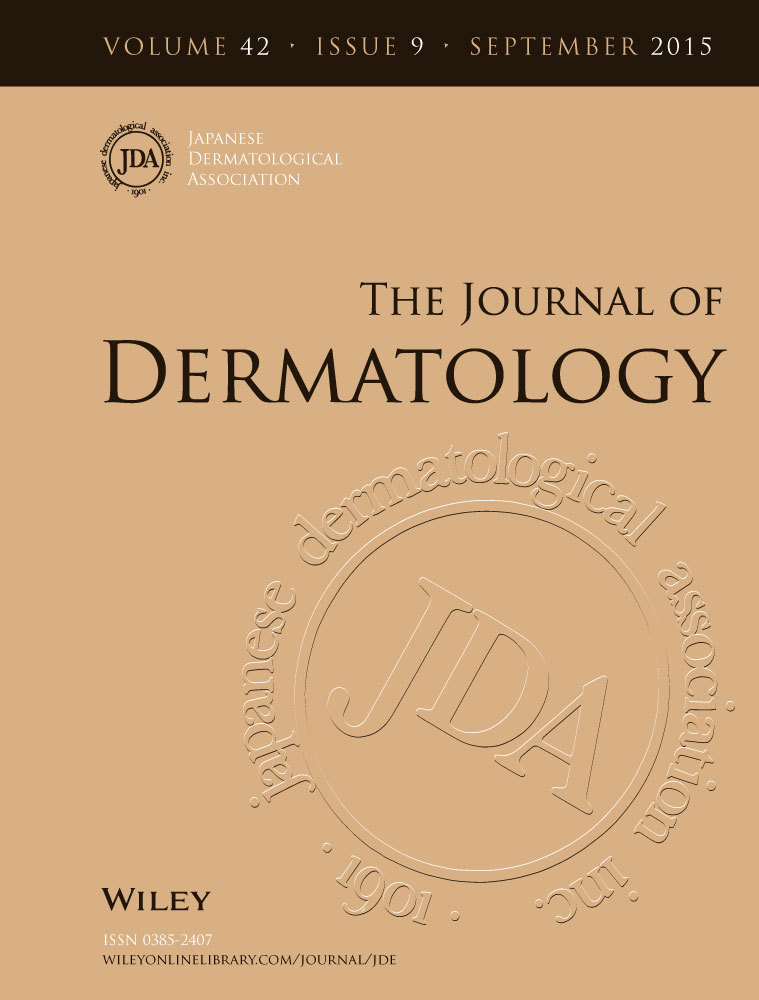Low-dose etretinate shows promise in management of punctate palmoplantar keratoderma type 1: Case report and review of the published work
Abstract
Punctate palmoplantar keratoderma type 1 (PPKP1) is a rare autosomal dominant disorder of keratinization, clinically characterized by punctate keratotic papules affecting the palmoplantar skin. Loss-of-function mutations in AAGAB have recently been reported as a cause of PPKP1. Despite the discovery of the genetic cause of PPKP1, pathogenesis-based therapies are still unavailable. Moreover, little is known about the effectiveness of treatments for PPKP1. In this study, we analyzed a Japanese woman with PPKP1 and identified a novel frame-shift mutation c.195_198del4 (p.Lys66Phefs*43) in AAGAB. Moreover, low-dose etretinate was effective in improving the PPKP1 lesions in our patient. Our published work review identified only eight cases of PPKP1 with successful response to topical or systemic treatments. Notably, six of the cases were successfully treated with systemic retinoids. Thus, this study clearly provides further evidence that PPKP1 is caused by AAGAB mutations and that systemic retinoids are the most promising current treatment for PPKP1.




